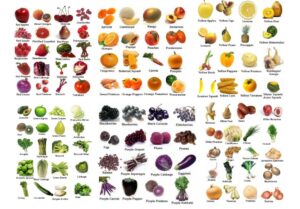
Crunch and sip (also called fruit break) is an Australian initiative across primary schools that encourages all children to stop for a quick 10 minute break in the morning to eat a fruit or vegetable.
It can often be done during group time or roll call and even in the afternoon. If your child had breakfast as soon as they woke up (as early as 6:30am for some kids), it’s a nice time for them to have something to eat around 9:30am. Children are also encouraged to sip on water as they need it.

Schools and educators behind this program argue that this simple initiative gives children a great energy boost when they need it, encourages healthy eating and gives them nutritious food options without the buzz of sugar in their bodies which results in better learning and attention.
Dietitians and Healthy eating advocates also encourage the program because research shows that children are not meeting the recommended serves of 2 fruits and 5 vegetables/day so a specific time in classroom focusing specifically on this goal is important.
But what is your child has quite a restricted range of fruit and vegetables? How can you support them?
Step 1: Talk to your child’s teacher if you are worried, explain the fruits/vegetables they eat and talk about how best to support them. Some kids do well with some gentle encouragement from someone who is not their parent (i.e. teacher) to eat a small amount of fruit. But for some children, this is too much pressure, they do better when no one focuses on them (i.e. takes the pressure off). It’s important your teacher knows what best supports your child.

Step 2: Practice with your child: talk to them about what foods they could take in, making a mini crunch and sip container and take it to the park – practice opening the containers with your child and reassure them that they don’t need to eat all of their fruit if they don’t want to.

Step 3: Keep the servings small and easy to eat – peel and chop up an apple, add a bit of juice on it so it doesn’t brown and give your child a fork.

Step 4: If your child eats a few fruits and vegetables, please try to vary it a little if you can – eg apple one day, 2 slices of cucumber the next and back to apple on the third day. And if they are even more restricted, vary the way you cut the apple different ways – sliced, chopped, segments, slinky or even better, can you vary the brand of apples? Pink lady, Fuji, Jazz? Would they accept a green apple? Can you slightly cook the vegetables so they are softer to eat?
Step 5: Ask your school what is allowed – some schools allow dried fruit and canned snack packs of fruit but some don’t (even though the guidelines list this as an accepted fruit if it is once a week). Some schools allow a dip (eg guacamole/salsa – both favourites for my kids and they enjoy eating their vegetables with) but some schools don’t allow this. I learned the hard way when my older son’s teacher refused to let him bring salsa into the classroom… poor kid was embarrassed that she made a big deal of it!! (I was annoyed – at least he is eating vegetables!)

Step 6: Breathe – it’s one break and it’s okay if they don’t eat. I’m actually not a fan of putting pressure on a child to lick/smell/spit into a napkin during fruit break. I appreciate that this is a popular therapy tool but over the 15 years of clinical experience working with fussy eaters, I feel like this strategy works best in play with an adult in a safe space at home (or in a therapy session), telling a child to do this during crunch and sip at school will only draw attention to them. And children can be harsh – one of the kids started doing this in my son’s class and my younger son (in year 1 at the time) was quick to come home and tell me. It got so bad that this child started hiding food so he didn’t have to eat it – which my son also noticed (as did other kids). If you’re going to put a fruit/vege that your child doesn’t eat, menu plan this and agree to it with them (eg 2 slices of apple – they eat and 1 slice of capsicum – what they don’t eat)…. And then leave it up to them whether they taste it or not. Try if you can not to ask them how they went with their lunchboxes as soon as you pick them up. Maybe just ask them to leave their lunchboxes on the kitchen bench and when they leave the room, have a peek inside….
Speaking of menu planning – I have a very awesome lunchbox planner to share with you – if you would like a copy then please sign up on the mailing list (scroll down the bottom on the main page) and it will be emailed to you in your welcome letter. This will also enable you to receive all the latest blog post to your inbox – about once a month www.letseatspeech.com.au
Wishing you a wonderful start to term 1 for your child, my biggest tip with lunchboxes is to involve your child– get everything ready over the weekend by planning with your child what they would like, write it down on the lunchbox planner and be as organised as you can so you don’t feel too stressed come Monday morning.
When I ran kindy lunchbox groups with parents and kids last week, one of the other parent’s tip (which I loved) was:
“don’t stress – it’s likely your kindy child won’t eat much in term 1 while they settle into the “new world” of school. Just give them big afternoon teas and expect a tired child come the end of the week”. Love that tip!
Wishing you happy mealtimes
Val
Paediatric Feeding Speech Pathologist @ Let’s Eat! Paediatric Speech Pathology
This website and information on this blog post is provided for educational purposes. It is not meant or intended to replace Speech Pathology assessment and management nor medical or nutritional care for a child. It is recommended that you discuss any concerns or questions you might have with your Speech Pathologist and managing Doctor and develop an individualised team plan specifically for your child.

About the author of this blog post
Valerie Gent is an Australian based Speech Pathologist with 15 years experience in Paediatric Feeding. She has opened a private practice called ‘Let’s Eat! Paediatric Speech Pathology’ in 2013 for Newcastle based babies and children with feeding difficulties. Valerie is passionate about working in the area of paediatric feeding and special needs and has been involved in the teaching and training of Australian Speech Pathology University students and allied health professionals. Prior to starting her private practice, she worked in acute paediatric hospitals in neonatal intensive care units, feeding clinics and clinics for children with special needs for 10 years. You can find out more about Valerie Gent and ‘Let’s Eat! Paediatric Speech Pathology’ via her website www.letseatspeech.com.au and Facebook page www.facebook.com/LetsEatPaediatric SpeechPathology or email her on valerie.gent@letseatspeech.com.au
